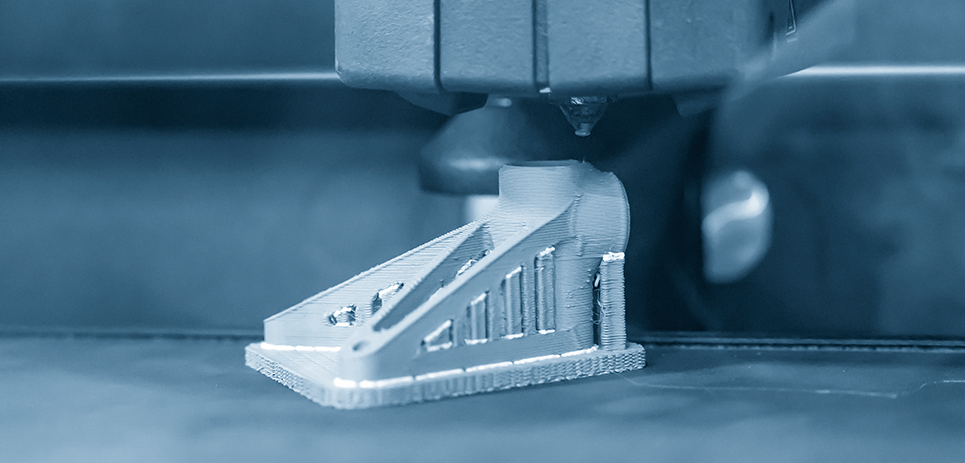Insight
Published and updated
5 Manufacturing Trends to Watch in 2020
Domestic manufacturing has shown resilience over the past few decades, emerging with lean determination and a new competitiveness. While recent reports indicate a slowdown in overall growth, new technologies and innovations are becoming game-changers, allowing small and medium-sized companies to remain viable. Here are 5 manufacturing trends to watch for as we enter a new decade.
1. Futurize your workforce
Employees are the lifeblood of the organization. A skilled workforce improves an organization’s ability to quickly respond to future events, like spikes in demand, changes in automation, or an upcoming product roll-out. With an ongoing shortage of skilled workers, training and retention are your tools for maintaining and growing your team’s abilities and roll call numbers.
The National Association of Manufacturers (NAM) 2019 4th Quarter Manufacturers’ Outlook Survey found that 63.8% of U.S. manufacturers surveyed cited the inability to attract and retain skilled workers as their top challenge for the ninth straight quarter.
The simplest way to determine the parameters of a training program is to set a benchmark per job title and then quantify current skills and abilities of everyone on the team. There’s your gap to develop your curriculum around. Other things to consider: what percentage of your workforce is cross trained in lateral positions in your products’ manufacturing flow? Are job processes clearly documented and easily available for reference?
Here’s a quick and inexpensive way to boost performance and motivation: install display monitors near production lines or in the warehouse. Make it easy for work teams to see and understand information related to their job. Whether it’s a key performance indicator like overall equipment effectiveness (OEE), a safety tip, or other business objectives you’d like your peeps to rally around, visual stats help reinforce goals and also encourage a little friendly competition.
2. Ensure your cybersecurity keeps pace with your expanding IT networks
Another manufacturing trend to watch this year is cybersecurity. Integrated automation and an endless stream of analytics provides quick and accurate information for better decision making. It’s almost too much data, right? Networks have expanded over time and so have their vulnerable entry points. Attempts are being made to access a company’s intranet where automation-specific programs tap into external servers for information and support.
Phishing messages, a means of malware delivery via email, will continue to be prevalent in the coming decade. Educating your employees on what to do with emails from unexpected sources will greatly reduce the risk of clicking because of a cleverly baited subject line.
Prevention first, detection second. To guard against invasion that could compromise your enterprise and expose private vendor and customer information, have safeguards in place.
In the event of a compromise, ensure the right people are immediately notified and a patch to the vulnerable entry point is quickly executed. Reporting should be able to specifically show what information was accessed. Progressive IT Departments will be aware of current and potential threats, and appropriate responses so it’s business as usual for the rest of us.

3. Print your proto’s and small-lots
3-D printing is no longer a novelty, but a manufacturing trend to watch. Officially called additive manufacturing, it’s going to make it easier for companies to create and evaluate prototype parts and produce in smaller runs.
Check this out: the materials used by these machines have expanded beyond plastics. Metals, electronics and even human skin cells are being explored.
Design changes for your company would be done through software. A few clicks on the computer potentially replaces major retooling. That means fewer molds or jigs to create, which saves invaluable time and money.
OK, so we’re all not operating with Big Pharma or Aerospace budgets. If bringing this technology in-house isn’t feasible, look to contract providers with the capability you’re after. We’re likely to see more of them come online in the near future.
4. Assemble a “fresh ideas” team
Yes, more meetings. But these are the good kind, and a better approach to collective decision making than an ongoing email thread. To ensure success, experienced organizations suggest including the relevant players on the project, but keep it on the lean side. One representative per discipline. And make sure Customer and Supplier concerns are represented. Also, assign a facilitator at the beginning of each meeting to make sure you all stick to the topic. Obstacles are short lived. If it’s relevant to the issue, it’s hashed out. Off-topic issues are jotted down on the whiteboard and taken offline.
Added benefits to these little get-togethers: it’s a good way to cross train, having folks from related departments peak over the fence at your little patch of grass. It also helps develop the skill sets of emerging leaders.
Amazon came up with a solution in a similar roundtable, identifying a bottleneck related to order fulfillment. They created an app for that. Called Relay, drivers now enter information on their cargo before they arrive at the warehouse. They’re given a QR code which is presented as they check in at the security gate. Time-savings, and also value-add, as Amazon and its consumers now have more accurate delivery status information.
5. “Made in the USA” is making more sense
This manufacturing trend is referred to as ‘reshoring’. As U.S. companies reconsider foreign manufacturing, many are recognizing the wider benefits of staying local. This may provide you with a few more supply chain options.
As offshore economies do well, rising wages equate to higher production costs. Slower responsiveness to production changes and political risk are additional reasons to favor remaining stateside.
Close proximity between the office and production floor equate to faster adjustments and higher quality. Issues are easier to resolve, and local tax incentives are often available too. That’s good news for Design and Engineering, and the company as a whole reaps the benefits.
